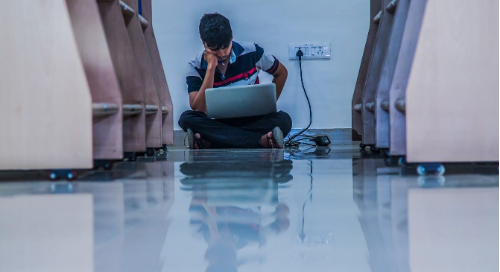expanding-the-role-of-the-doctoral-student-reviewer
September 26, 2016
When current co-editors Fouad Abd-El-Khalick and Dana L. Zeidler of the Journal of Research in Science Teaching, JRST, sent their proposal for editorship to NARST: A Worldwide Organization for Improving Science Teaching and Learning Through Research, one main focus of theirs was to build “a deliberate educational component into the editorial operations of the journal.” Abd-El-Khalick and Zeidler knew that the journal played an important part in the education of doctoral students, but felt that there was more they could do.
“We believe that JRST and its peers have an enormous, and as of yet unrealized, potential to make additional and unique contributions to doctoral education,” Abd-El-Khalick and Zeidler note.
Once their editorship was approved, they began to plan, honing in on the journal’s longstanding graduate student guest reviewer program. Like many other journals, JRST’s program elicited student reviewers, who were then assigned manuscripts to review, wrote reviews, and then received a copy of an “expert” review or the final editorial decision letter. At the time, this is where the program ended.
Taking the extra step
Abd-El-Khalick and Zeidler wanted to engage graduate students more fully in the peer review process of a publication, which they will be participating in regularly over the lifetime of their careers. An early introduction to this complex but necessary process helps students prepare for the highlight of their doctoral degree, the publication of their doctoral dissertations. Investing in the education of graduate students prepares the next generation of researchers, reviewers, and editorial board members of refereed publications.
With all this in mind, the editorial office set out to start the “JRST Doctoral Mentored Reviewer Initiative.” This new initiative incorporates the student reviewer program of its past, but extends the process by asking students to work together—under the supervision of their faculty advisor—to discuss the formal editorial decision letter and generate a report, which is meant to simulate the response that manuscript authors generate in response to editorial decision letters. Unlike other programs, participating students work with a ‘live’ submission, which adds authenticity, immediacy and relevancy to the experience.
How do I get involved?
Interested students must gather a group led by a faculty advisor, and send a participation request to the JRST editorial team. A couple of weeks later, students will receive the article to review. Their reviews must be submitted within four weeks of accepting the invitation to review, as per regular reviewer guidelines. The editorial board will send students the formal editorial decision letter to review, compare to their own reviews, and discuss. A sponsoring faculty member will oversee the group discussion and ideally use this opportunity to teach students about conducting reviews, rigorous research designs, data collection, and analysis methods; high-quality writing, and presenting streamlined arguments in a manuscript. The faculty member will guide students as they generate a group report that discusses ways to address the issues and concerns with the manuscript in question, which are outlined in the official decision letter. This phase of the experience is meant to simulate the process an author would go through to write a cover letter to accompany the revised manuscript.
Participants will receive a letter of acknowledgement from the editors and their names, along with their supervisor’s name(s), will appear in the final issue of JRST for that volume year. The total timeline for this program will take between five and seven months.
Learning from experience
Like many graduate faculty members, the editors engaged their doctoral students with a similar process, in which they used their own submitted manuscripts from one time or another. While they found this process useful, the manuscripts were often limited to what happens to be the preferred research focus and research methodologies of the particular faculty member. This approach was also limited by the range of manuscript topics and approaches, and lacked the authenticity that the new initiative provides. Now graduate students are engaged with the life cycle of peer review of the manuscript in question. The student reviews have no bearing on the actual or official editorial decision for manuscripts used in the initiative.
“We hope that students would internalize the fact that a finalized published manuscript comes into being as the result of a process that engages the collective minds of a number of individuals in their research community who mindfully participate in critical discourse through a well-established process featuring a set of practical conventions and ethical standards,” say Abd-El-Khalick and Zeidler.
JRST will track participation in the new initiative and plans to assess its impact by surveying participant students and mentors.
For more information on the JRST Doctoral Mentored Reviewer Initiative please visit the Journal of Research in Science Teaching’s site here.
Image credit: Rawpixel.com/ Shutterstock












